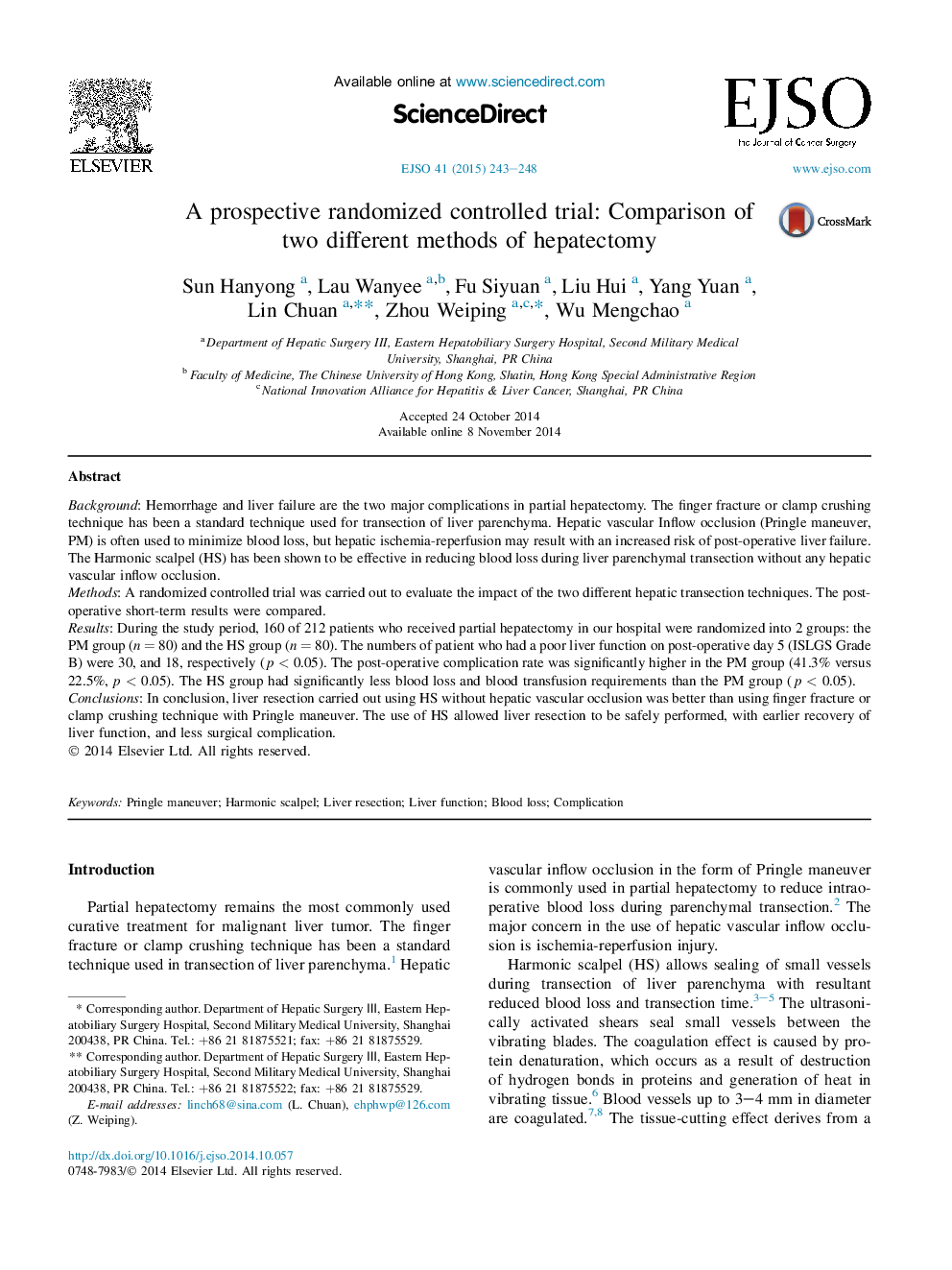| Article ID | Journal | Published Year | Pages | File Type |
|---|---|---|---|---|
| 3984643 | European Journal of Surgical Oncology (EJSO) | 2015 | 6 Pages |
BackgroundHemorrhage and liver failure are the two major complications in partial hepatectomy. The finger fracture or clamp crushing technique has been a standard technique used for transection of liver parenchyma. Hepatic vascular Inflow occlusion (Pringle maneuver, PM) is often used to minimize blood loss, but hepatic ischemia-reperfusion may result with an increased risk of post-operative liver failure. The Harmonic scalpel (HS) has been shown to be effective in reducing blood loss during liver parenchymal transection without any hepatic vascular inflow occlusion.MethodsA randomized controlled trial was carried out to evaluate the impact of the two different hepatic transection techniques. The post-operative short-term results were compared.ResultsDuring the study period, 160 of 212 patients who received partial hepatectomy in our hospital were randomized into 2 groups: the PM group (n = 80) and the HS group (n = 80). The numbers of patient who had a poor liver function on post-operative day 5 (ISLGS Grade B) were 30, and 18, respectively (p < 0.05). The post-operative complication rate was significantly higher in the PM group (41.3% versus 22.5%, p < 0.05). The HS group had significantly less blood loss and blood transfusion requirements than the PM group (p < 0.05).ConclusionsIn conclusion, liver resection carried out using HS without hepatic vascular occlusion was better than using finger fracture or clamp crushing technique with Pringle maneuver. The use of HS allowed liver resection to be safely performed, with earlier recovery of liver function, and less surgical complication.
